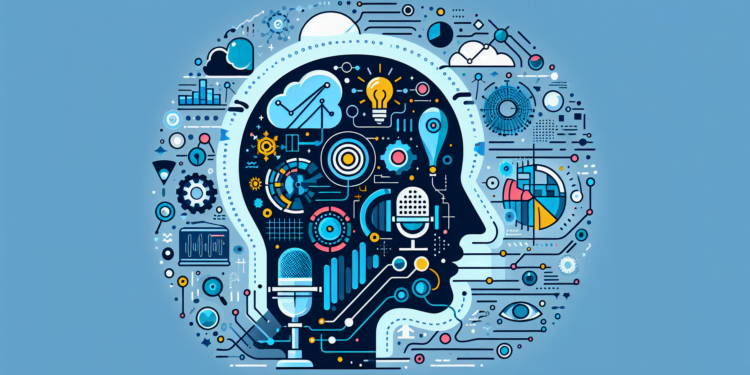Voice recognition is one of the most thrilling areas of artificial intelligence (AI), where the boundary between science and science fiction becomes increasingly blurred. The capability of machines to understand and respond to human speech is not only fascinating but also holds transformative potential across multiple sectors. Given the nature of this topic and the specialized audience it targets, this article will focus on breaking down and interpreting the technical terms related to voice recognition and AI, as well as their recent evolution and future perspectives.
1. Automatic Speech Recognition (ASR)
It is the process by which a computer identifies and processes spoken language words. While ASR systems have existed for decades, recent advancements in deep learning and neural networks have led to significant improvements in their accuracy.
2. Natural Language Processing (NLP)
It goes a step beyond ASR, focusing on interpreting the meaning of words or phrases in spoken language. NLP combines linguistic models and learning algorithms to understand the context and intent behind words.
3. Deep Neural Networks (DNN)
These networks, made up of multiple layers of processing nodes, are the backbone of modern ASR systems. They drive not only voice recognition but also machine learning capabilities and the generation of contextual responses.
4. Acoustic Models and Language Models
An acoustic model is used in ASR to relate auditory signals to linguistic units, whereas a language model predicts the sequence of words to form grammatically correct sentences. Efforts have been made recently to integrate these models more seamlessly.
5. Machine Learning (ML) and Deep Learning (DL)
These are crucial techniques in AI. ML refers to the method by which computers improve their performance through experience, while DL, a branch of ML, involves the use of DNNs to emulate the functioning of the human brain.
6. Voice-Assisted Applications
Devices like Amazon Echo and Google Home have popularized the use of voice-activated assistants. The implementation of ASR and NLP opens up a world of possibilities for natural interaction with technology.
7. Application Programming Interfaces (APIs)
APIs such as Google Cloud Speech-to-Text allow developers to integrate voice recognition functionality into their own applications, making it easier to customize and extend voice-based services.
8. End-to-end Modeling
A more recent approach in ASR uses deep learning to model the entire voice recognition process, from acoustic input to textual transcription, holistically, eliminating the need for separate modules for specific tasks.
9. Voice Synthesis
Complementary to ASR is voice synthesis or Text To Speech (TTS), which converts text into speech. This technology has advanced with the advent of WaveNet AI and attention models that produce synthetic voices indistinguishable from human ones.
10. Vocal Style Transfer
AI can now capture the unique features of a person’s voice and transfer them to voice synthesis, allowing for the creation of personalized and unique voices for each user.
11. Biometric Verification and Voice Recognition
Applications go beyond basic interaction and extend to using voice as a biometric metric for identity verification, raising new dimensions of security and privacy concerns.
12. Ethics and Privacy in Voice Recognition AI
As technology becomes more pervasive, significant ethical complications emerge about the collection, storage, and use of voice recordings.
13. Multimodal Fusion
The future of voice recognition involves integration with other forms of recognition, such as visual, for a more holistic and accurate understanding and response to user inputs.
In Conclusion
The evolution of artificial intelligence in the field of voice recognition is a clear example of how collaboration between emerging technologies can lead to game-changing innovations. The combination of advanced machine learning techniques with a focus on user experience is creating an unprecedented range of practical applications. The ability of a device to understand and process not only what has been said but also how and by whom is setting a new standard for human/machine interaction. As technology advances, it’s critical to continue considering the ethical and privacy implications that accompany voice recognition and AI. Only by maintaining a proper balance between innovation and responsibility can we ensure that these tools are developed in a way that benefits society as a whole. The frontier of what is possible in voice recognition is rapidly expanding, and with it, the limits of artificial intelligence.






















